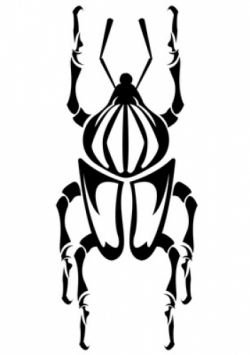Scarab

This little beetle may seem to be a rather innocuous creature, but the symbolism attached to it places this insect in the same rank as many far more impressive beasts, and in some cases above them.
In Ancient Egyptian iconography, the scarab was a frequently seen symbolic animal, appearing in amulets, jewelry and many kinds of objects that have been found in tombs. A prominent example comes from the tomb of Tutankhamen (a.k.a. King Tut), where a large scarab made of lapis lazuli and with wings of glass and other semi-precious stones was found during excavations.
In a nutshell, the scarab’s high status in Egyptian belief was due its strong association with the sun. Another name for the scarab is the Dung Beetle, and one of its notable habits is rolling its own dung across the ground in order to form a ball, which was later used as an incubator for the beetle’s young. The Egyptians saw the act of rolling a ball over a distance as analogous to the sun god guiding the sun across the sky, and the emergence of the beetle’s young from the ball was emblematic of rebirth and regeneration, all related to solar symbolism.
© Symbols.com
